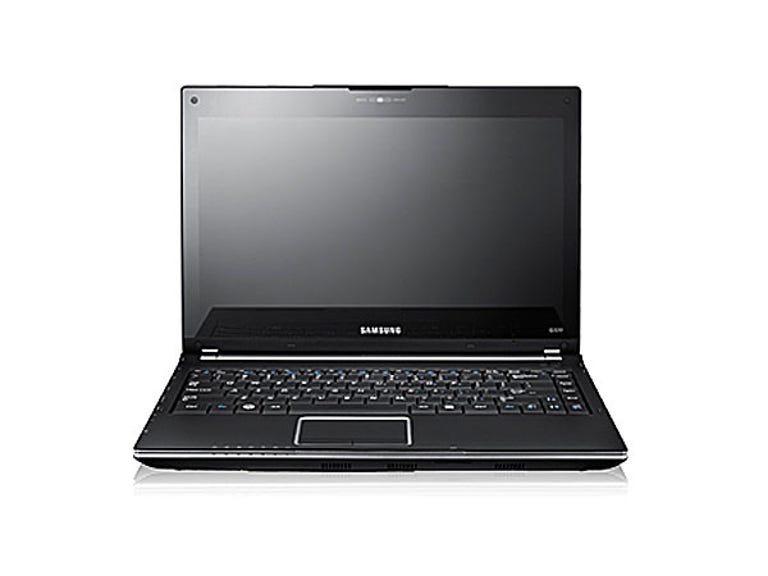 Why You Can Trust CNET
Why You Can Trust CNET Samsung Q320 review: Samsung Q320
Samsung's Q320 impresses us on most levels, except for the critical issue of battery life.
Design
Samsung's not a brand that you'd naturally associate with notebooks, and its efforts to date have been a bit mixed. The Q320 is a basic enough looking notebook of moderate size (326.0x228.5x33.2mm) and weight (2.2kg), making it semi portable with a bag. Not something you'd jauntily heft around, but not something that'll tear out your rotator cuff either. The left-hand side of the Q320 is very busy with ports that run the full length of the bezel, while the right-hand side houses a slot loading DVD writer. There's nothing wrong with basic designs, and the Q320 looks exactly like you might imagine a generic notebook could look. Scratch off the Samsung logo on the back, and it could be anybody's notebook. Well, anybody's notebook with a horribly scarred back, anyway.
The Good
The Bad
The Bottom Line
Features
The Q320 we tested sported an Intel Core 2 duo P7550 2.26GHz processor, 4GB of installed memory and a dedicated 256MB Nvidia GeForce G 105M graphics processor. It's Wi-Fi 802.11b/g/n capable, bearing with it a Centrino 2 sticker, as well as a standard Ethernet port. You also get standard audio ports, HDMI output, eSATA/USB combo port, standard USB 2.0 ports and VGA out, all down the left-hand side. If for some curious reason you were to use most of those, you'd run out of space, as they all sit on the left-hand side. Then again, we're struggling to come up with a scenario where you'd use both the VGA and HDMI output at the same time, so perhaps the point is moot.
Performance
At a physical level, the Q320's a nice notebook to use for basic tasks. The keyboard is responsive and nicely spaced out, and while it's not an ultraportable, or priced like one, it's light enough for basic portability purposes.
On a benchmark front, the inclusion of dedicated graphics in notebooks usually makes a significant difference to 3DMark06 scores, and the Q320 was no exception, with a very solid score of 2605. The only caveat there is that 3DMark06 is aging disgracefully. If you buy the Q320 to run mid-range games, you should do just fine. Buy it expecting to output full range 60fps Modern Warfare 2, and you're much less likely to be all that happy. On the productivity front, its score of 5094 in PCMarko5 is likewise solid, pointing to this being a good working system.
We were recently highly disappointed with the battery life on Samsung's R519 laptop, and it's seemingly a problem that Samsung's ported over to the Q320. We ran our standard and quite intensive DVD playback test on the Q320 with all battery-saving measures disabled and screen brightness at full. The results weren't quite as poor as the R519's pathetic one hour 35 minutes, but they weren't much better. The Q320 conked out after two and half hours of playback time, not quite enough to get you through a movie. With a less intensive activity and screen brightness down you might stretch that to three hours, but that's still not impressive in a modern laptop context.
Without the slightly shaky battery life, the Q320 would be an easy recommendation at the price. Considering it, however, we'd look elsewhere for an equally powerful system that can crack more than a couple of hours of working life.


